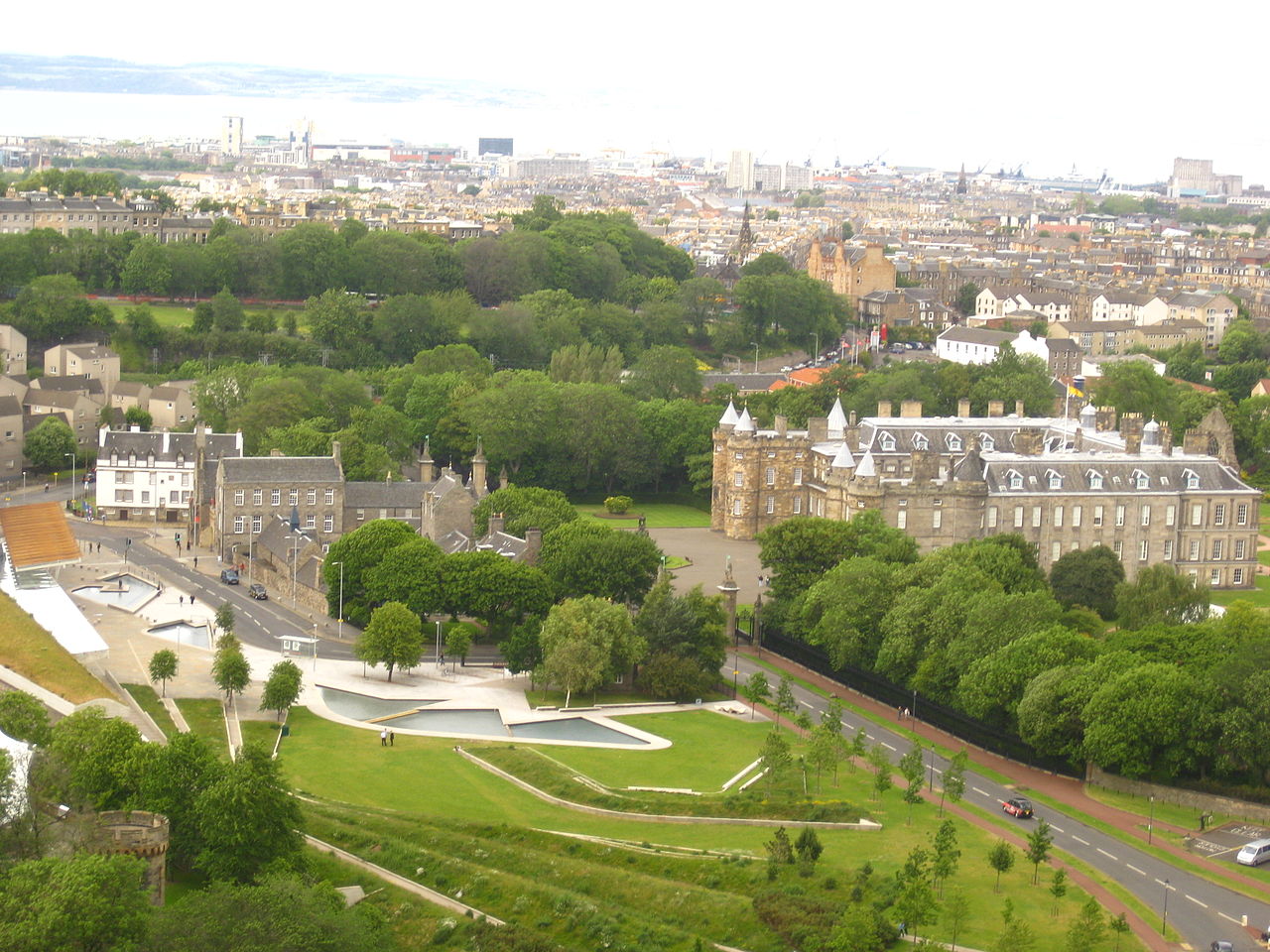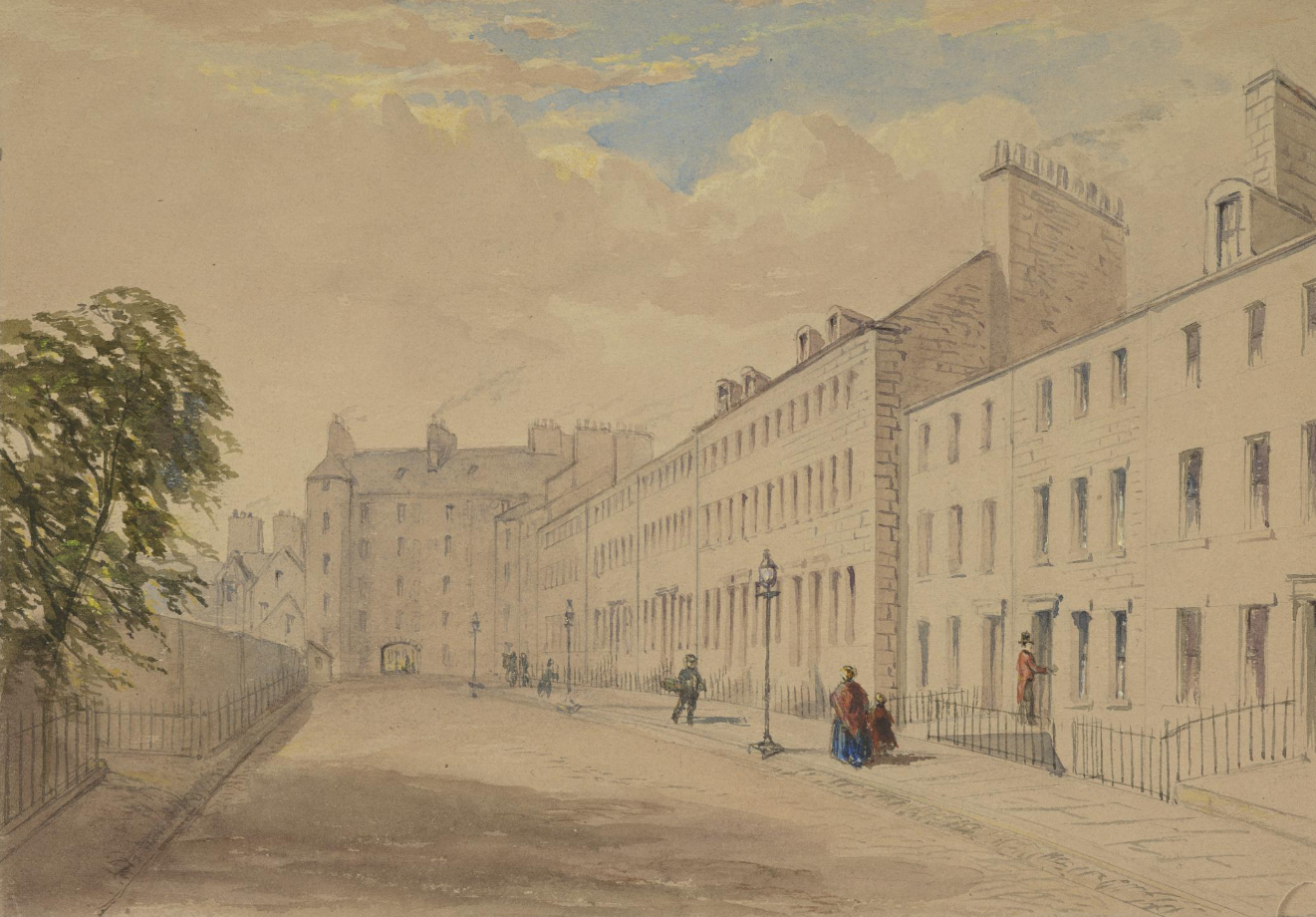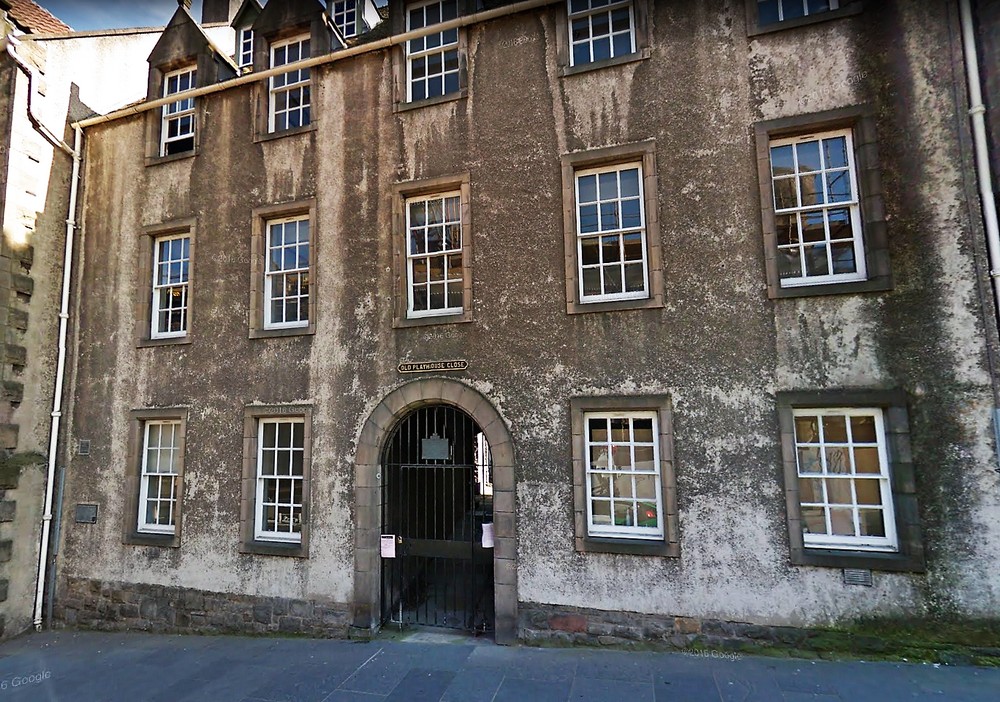
Canongate 194-198 and Old Playhouse Close
Photograph: Google maps, digitally enhanced
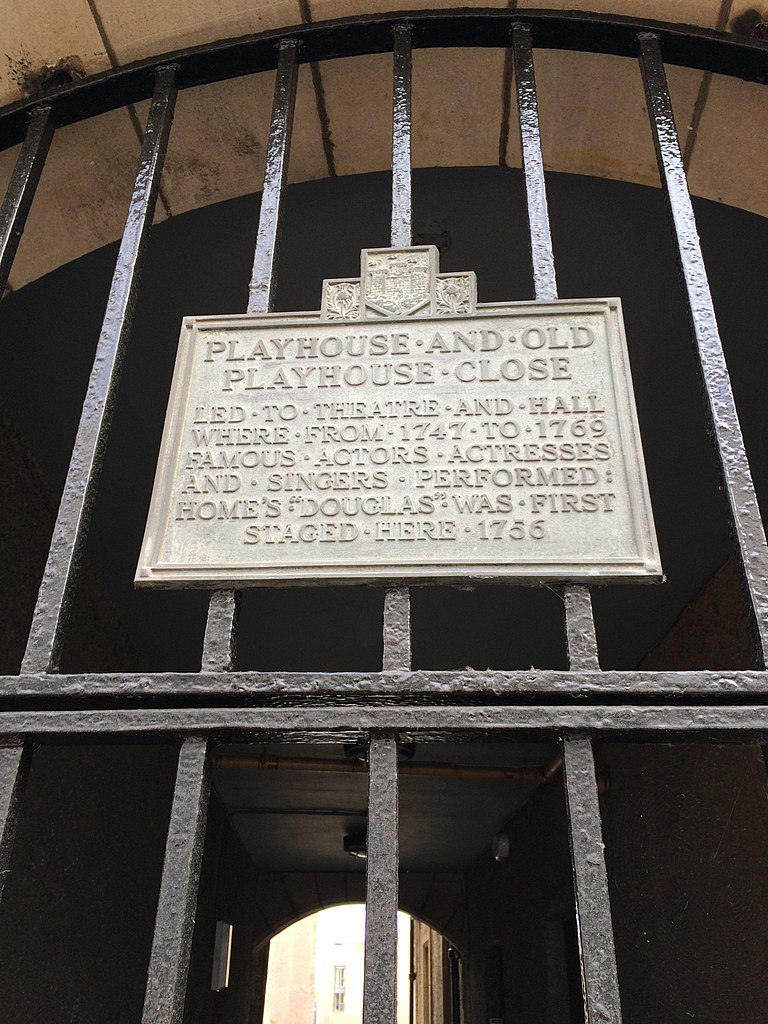
Plaque Old Playhouse Close
Photograph: Gareth Davis, Wikimedia (CC-BY-SA)
Old Playhouse Close
Old Playhouse close led to the city's first theatre, the Canongate Theatre, where among many other works, the famous tragedy of the Rev. John Home, entitled Douglas was first performed in 1756. Although eliciting controversy, it was an undeniable success leading David Hume to say that John Home possessed "the true theatric genius of Shakespeare and Otway, refined from the unhappy barbarism of the one and licentiousness of the other." However, eventually, John Home had to resign from the ministry while the Church of Scotland forced the theatre's closure in 1786.
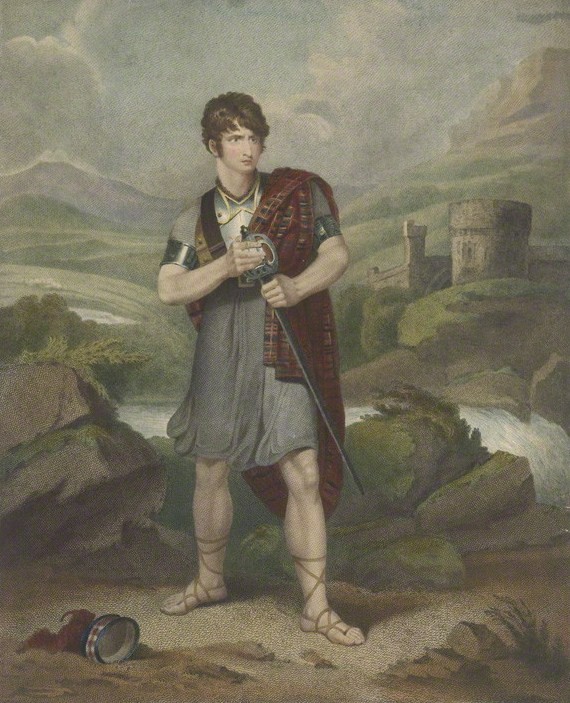
Portrait of Henry Erskine Johnston (1777–1830?), Scottish actor, in the title role of the play Douglas
By Engraver Edward Mitchell, after Henry Singleton, (PD)
The Scottish author, surgeon and poet Tobias Smollet (1721-1771) also lived in Old Playhouse Close, where he wrote his "Rabelaisian" novel The Expedition of Humphry Clinker.
Thereafter walk a further 150 metres down the Royal Mile to Canongate Kirkyard and the statue of Robert Fergusson on the left.
Canongate Kirkyard
The Canongate Kirkyard is the site of burial of two giants of the Enlightenment, Adam Smith and Robert Fergusson. The latter greatly influenced Robert Burns, who described him as his "elder brother in misfortune, by far my elder brother in the muse." He wrote in the Scots language, excelled in satire and vivid descriptions of his city and its inhabitants, while espousing a Bohemian existence, ultimately leading to his premature demise at the age of twenty-four. An example of his evocative poetry is to be found in Hallow Fair, where he sketches the fair, its peddlers and customers:
"Here chapman billies tak their stand, peddler fellows
An shaw their bonny wallies; fancy goods
Wow, but they lie fu' gleg aff hand very glibly
To trick the silly fallows:
Heh, sirs, what cairds and tinklers come, vagrants and tinkers
An ne'er-do-weel horse-coupers, dealers
An' spae-wives fenzying to be dumb, fortune-tellers pretending
Wi' a' siclike landloupers, vagabonds
To thrive that day."
The arresting statue of him outside Canongate Kirkyard by David Annand, was unveiled in 2004 and portrays him striding along, book in hand.
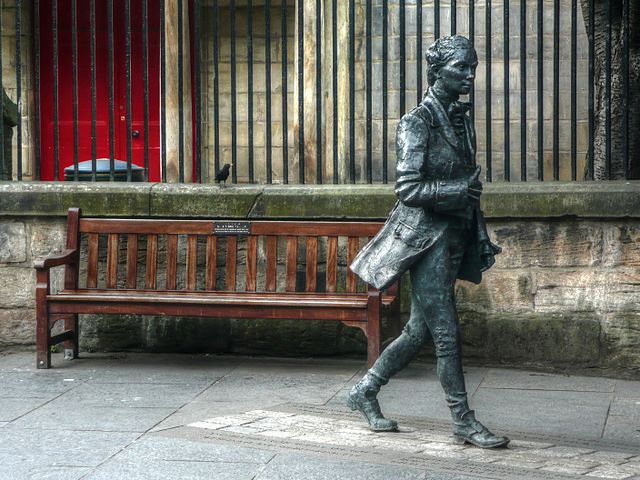
David Annand, Robert Fergusson
Photograph: Nevit Dilmen, Wikimedia (CC-BY-SA)
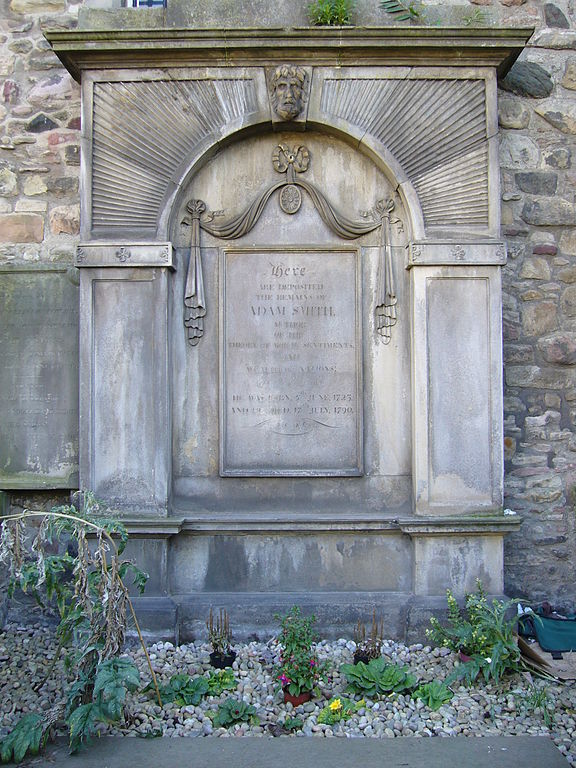
Adam Smith's grave
Photograph: Scrabbleship1, Wikimedia (PD)
